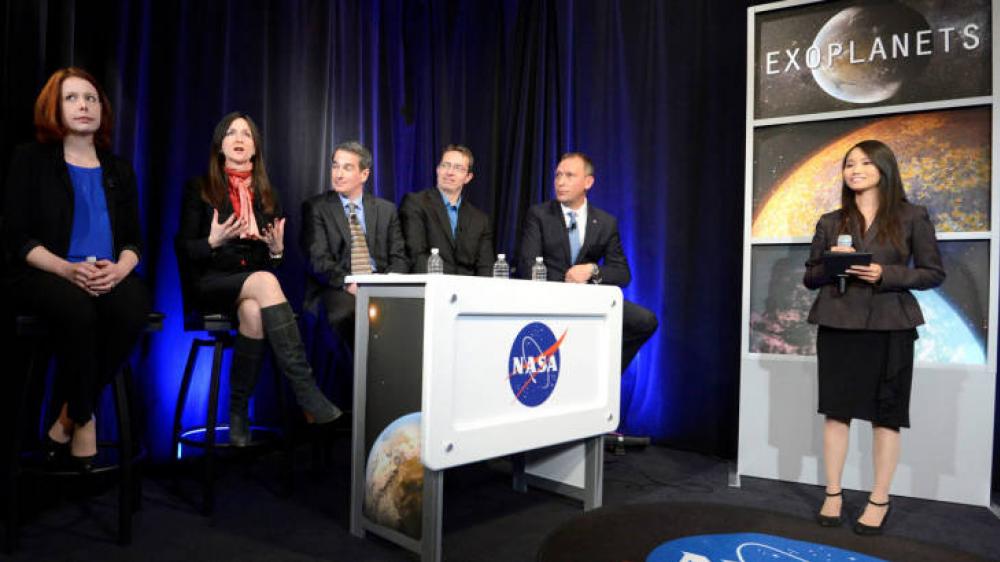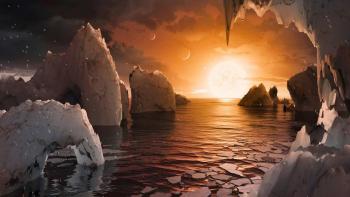

- *Building design
- *Design - Built
- *Precast drawing services
- *BIM Modeler , Manager , Consultant
- *Pre-Construction
- *Software training
- - Allplan
- - Revit
- - Advance Steel
 โทรศัพท์ : 02-4518555-8
แฟกซ์ : 02-4518559
โทรศัพท์ : 02-4518555-8
แฟกซ์ : 02-4518559
 เลือกภาษา :
ไทย l
Eng
เลือกภาษา :
ไทย l
Eng
NASA scientists have revealed the discovery of an extrasolar planetary system just 40 light-years from Earth, containing seven Earth-sized planets orbiting the same star, and potentially supporting life.
Scientists at NASA's Spitzer Space Telescope revealed Wednesday that they have discovered the first planetary system with seven Earth-sized planets orbiting a single star, just 40 light-years from Earth.
Scientists say all seven planets outside our solar system have the potential to host liquid water if they have the right atmospheres. Three of the seven planets have been confirmed to be in the habitable zone, or the area around their star at the right distance. Planets in this zone are most likely to have liquid water on their star, and if they do, they could potentially host life.
“This discovery could be a key piece in the puzzle of finding habitable environments, places where life can thrive,” said Thomas Zurbuchen, deputy administrator for NASA’s Science Mission Directorate in Washington. “Answering the question, ‘Are we alone in space?’ is one of the most important goals of science, and finding a planet in the habitable zone for the first time is an important step toward that goal.”
The system is called TRAPPIST-1, after the Transiting Planets and Planetesimals Small Telescope in Chile, which first discovered it in 2016. At that time, only three planets were found, but several ground-based telescopes, including Spitzer, confirmed the existence of two of the three planets and discovered five more, bringing the total to seven. TRAPPIST-1 is about 40 light-years, or 378 trillion kilometres, from Earth.
The discovery was published in the journal Nature on Wednesday, and NASA held a press conference the same day in Washington.
Using data from the Spitzer telescope, scientists were able to accurately measure the sizes of seven exoplanets and estimate the masses of six of them for the first time. They were also able to calculate their densities. The densities suggest that six of the planets are likely rocky. The seventh planet, which scientists have yet to determine the mass of, leads them to believe, could be a snowball. Further observations could not only reveal whether or not it contains liquid water, but also whether or not it has any liquid water on its surface.
The star of the TRAPPIST-1 system, or TRAPPIST-1, is about the same size as Jupiter, but has the opposite characteristics of the Sun. It is classified as an ultra-cool dwarf star, so cold that planets orbiting it very close to it could have liquid water on their surfaces, which is impossible in our solar system. The seven planets orbiting it are closer to the star than the distance between Mercury and the Sun, and are so close to each other that if you were to stand on one of them, you could see the geology or clouds of the other.
The planets in the TRAPPIST-1 system also only face one side towards their star, meaning that the star's area will always be day or night without change. They may also have weather conditions different from our own world, such as strong winds blowing from the day side of the land to the night side, or drastic changes in temperature.
Read more at: http://www.thairath.co.th/content/864706











